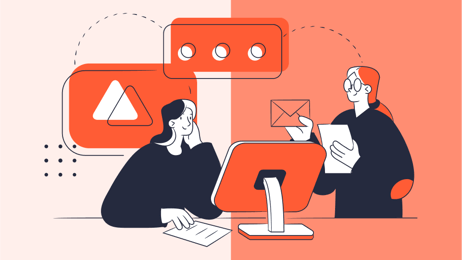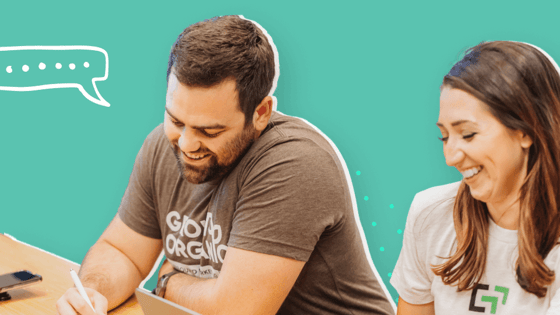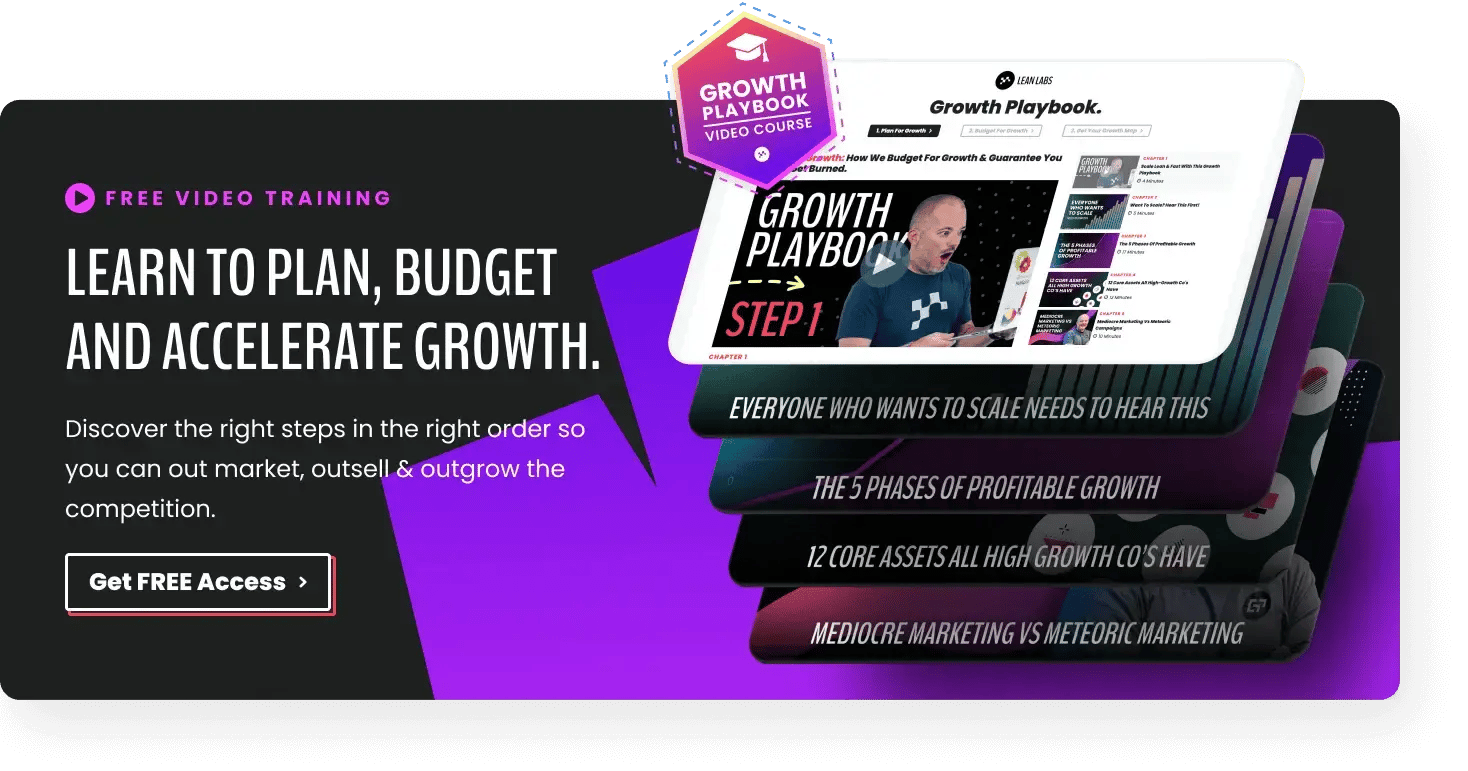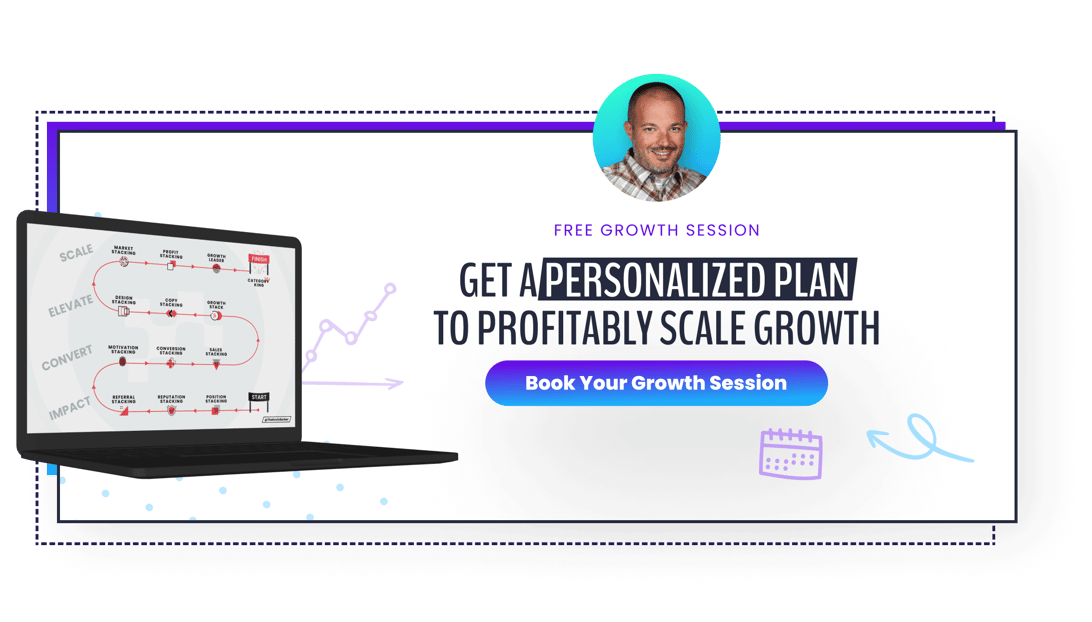Here's our list of 9 tactics that will help you build your brand awareness online:
Read on or click the links below to find out why these are our top picks for building brand awareness.
- Start an Instagram Account
- Run Facebook Like a Pro
- Start a Youtube Channel
- Run Facebook Ads
- Partner with Another Brand
- Drill Down on Referrals
- Offer Exclusive Access
- Take a Stand on Important Causes
- Use Data in Intelligent Ways
You don’t need expensive television ads or billboards to build brand awareness. Sure, a lot of people would see a commercial for your company if you sprung for Super Bowl ad placement, but few brands can afford the $5 million fee. Some of the smartest ways to build the value of your brand in the mind of your audience are free, nearly-free, or really cheap.
But what is brand awareness, anyway?
HubSpot’s Lisa Tonin offers the simple definition: Brand Awareness is the level of familiarity that consumers have with a particular brand.
Brand awareness encompasses more than just your services or products--you can build awareness around your logo, culture, name, or values. Brand awareness is why you probably have some pretty strong associations with the visual of McDonald’s golden arches, HubSpot’s orange sprocket, or the Olympics’ five interlocking rings.
VIDEO TRAINING
Nail Your Go-To-Market Strategy With This Proven Playbook.
Learn to plan, budget, and accelerate growth with our exclusive video series. You’ll discover:
- The 5 phases of profitable growth
- 12 core assets all high-growth companies have
- Difference between mediocre marketing and meteoric campaigns
Thanks for submitting the form!
We'll review the information you've submitted and respond to you just as soon as possible.
Brand awareness is achieved when your customers and prospects have built instant associations with your brand. It’s a precursor to other crucial concepts like brand value--when customers are willing to pay more for your products or services because they trust your customer experience. In this article, we'll show you 9 of the fastest ways to build awareness of your brand online without spending millions of dollars on advertising.
9 Fast Ways to Build Brand Awareness
Brand awareness is probably even more valuable today than it has been in the past. Up to 80% of a brand’s value is now intangible, according to Forbes. Understanding and leveraging brand awareness is a crucial element of successful marketing in today’s complicated business environment.
But, taken out of context, brand awareness can be nothing more than a vanity metric.
Ask yourself this question: if 100% of your potential consumers knew about you (awareness) but your offer wasn't compelling enough for any of them to buy, is your brand awareness worth anything?
Of course it's not.
Brand awareness alone is a vanity metric. It has to be the right kind of awareness to make a difference.
You need to do more than build awareness of the brand, you need to build awareness of your brand message. But if that message doesn't resonate with your target audience, you're wasting your time.
How do you make the message great? Watch these videos!
Once you've built a compelling brand message, try out these 9 strategies to increase your brand awareness.
1. Start an Instagram Account
There were 800 million monthly users of Instagram as of September 2017. While the network may be the most popular among millennials and younger members of Generation Z, you shouldn’t write it off just because you’re B2B or your target audience is a little older. 59 percent of daily users are 25 years or older. As a low-investment platform that offers access to literally millions of consumers, Instagram has a place in virtually every business's brand awareness strategy.
Build brand awareness on Instagram by:
- Documenting a day-in-the-life of your employees
- Being amateur and authentic--there’s no need for highly-polished or curated when it comes to connecting with an audience on Instagram.
- Showcasing real employees or customers
- Having fun, and spotlighting employee events, volunteer efforts, and accomplishments.
- Posting often. Best practices dictate 1.5-3 posts per day for optimal results.
Take inspiration from First Federal, a small, local bank in the Pacific Northwest that offers an incredibly people-focused Instagram experience: 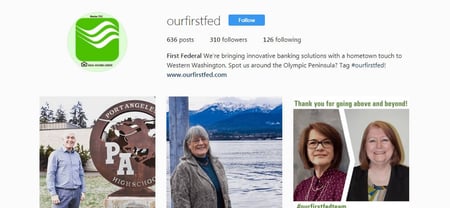
Image credit: First Federal Instagram
2. Run Facebook Like a Pro
Yes, Facebook is still relevant. The 1.32 billion active daily users and over 2 billion individuals who log on at least once per month make Facebook an essential piece of any company's brand awareness strategy. You can focus on having fun and building brand awareness organically to improve lead generation and exposure metrics. This network’s massive membership offers huge potential for organic exposure to highly-qualified prospects.
- Sponsor photo or video contests to collect user-generated content submissions, while reaping the algorithmic rewards of higher exposure through visual content.
- Offer a reward for written or video customer reviews in contests that offer a prize to a randomly-selected winner.
- Make engagement easy by using Facebook’s capability to post surveys and polls.
- Have real conversations. Your customers and audience care just as much about what’s next in your industry as you do!
- Respond in real-time, using a real human voice.
B2B video platform Wistia offers a fun-filled Facebook experience jam-packed with multimedia content, high-value tips, and authentic conversations. 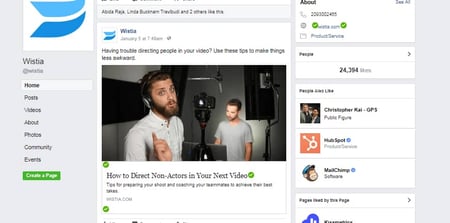
Image Credit: Wistia Facebook
3. Start a YouTube Show
People are watching more and more video content, and YouTube is the platform of choice. We’ve come a long way since early adopters of YouTube pioneered this platform as a tool for building brand awareness through irreverent, short-form video content. Remember Blendtec’s “Will it Blend” series, and how it showed us all years ago that video could be fun?
Currently, streaming video accounts for over two-thirds of all internet traffic. 80% of people are watching more video on YouTube and social media than in previous years. Capitalize on consumer demand for video content by creating new content on YouTube to build brand awareness.
- Be consistent, and commit to delivering a new episode weekly, bi-weekly, or at other consistent intervals.
- Have fun, and commit to fun especially if you’re a brand with “boring” products or services. There’s a time and place for sales-focused video content, but it's not on awareness-building YouTube shows.
- Be entertaining and push the envelope by collaborating with industry thought leaders and other fun guests.
InVision is quickly approaching 70 episodes of their YouTube show called DesignTalk. Targeted at their audience of designers, these episodes cover need-to-know info like freelance contracts, innovation, and team relations. 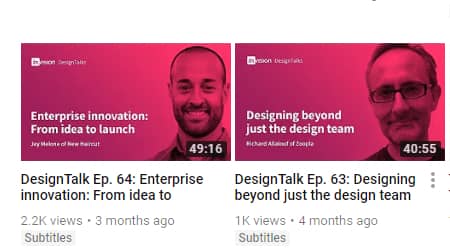
Image credit: InVision’s YouTube Channel
4. Run Facebook Ads
Wait, is paid advertising inbound-approved? The short answer is “yes,” and the longer answer is “it's complicated.”
HubSpot’s acknowledged the fact that social media network algorithm changes over 2016 to present have really changed exactly what’s possible with organic (not paid) social media marketing. For some brands, native ads can be a great tool for building brand awareness with their target audience.
Remember Seth Godin’s statement “permission marketing is the privilege (not the right) of delivering anticipated, personal and relevant messages to people who actually want to get them.”
Don’t use paid Facebook ads to sell. Don’t do it. Use ads to promote highly-relevant content, contests, or your social media channels.
5. Partner with Another Brand
Co-marketing is on the way up. You’ve probably run into influencer marketing on Instagram, as B2C brands increasingly realize the value of paying Instagram influencers, individuals with massive organic followings, to promote their products. However, there’s a lot of value in co-marketing and influencer marketing for B2B, too. Over 73 percent of B2B organizations plan to include influencer marketing or brand partnerships in their brand awareness strategy in the coming years.
- Partner with another brand with complimentary, non-competing products to offer collaborative, original research or webinars.
- Collaborate with an industry influencer to create content that shines organic exposure on your brand to their audience.
- Invest in your best spokespeople; your existing clients for powerful video and written case studies.
- Use mentions to spotlight your employees’ voices and support their efforts to achieve thought leadership through authoring blogs, articles, speaking at conferences, and using social media.
Some of the most effective examples of companies building brand awareness through partnership activities are incredibly innovative. For example, Japan-based fashion brand Uniqlo sponsors free admission to New York’s Museum of Modern Art (MoMA)4 PM - 8 PM every Fridays. This partnership activity has provided Uniqlo with strong brand awareness and goodwill among its potential customers.
6. Drill-Down on Referrals
Referrals may not be among the brand awareness-building activities that increase your audience by thousands, but they are a highly-effective way of extending your reach to individuals who already trust your brand.
74% of customers view word-of-mouth recommendations from friends, family, and professional peers as an important influence in their purchasing decisions.
How often have you taken advantage of great customer referral rewards, like the $15 credit offered by Uber if you refer a friend? Here are some ways to skyrocket your referral rate:
- Referral contests. In an email promoting a referral contest, Huckleberry offered $1,000 cash to the customer who generated the most referrals!
- Seasonal rewards: Offering a limited-time double rewards referral bonus could send a surge of qualified customers your way.
- Social gifting: Using tactics inspired by BlueApron meal delivery service, allow your customers to “gift” a free trial or sample to several friends.
- Offer Mystery Reward: Everyone loves surprises, which is why the “mystery gift” for referral programs used by companies like MeUndies can have great returns.
7. Offer Exclusive Access
Exclusive access can be a powerful marketing tool, especially if your company is trying to create brand awareness for a new product or service launch. Remember way back over a decade ago, when invites to Google’s new Gmail email platform were highly sought-after and primarily reserved for people with an “in” or members of the media? Or, when Facebook was limited to students and alumni of top-tier colleges?
Scarcity can create a lot of demand.
One example of successful use of this brand awareness tactic was executed by Evernote. The app initially launched as a closed Beta for four months. Getting access required consumers to sign up and send invitations through social media, creating loads of buzz. By the end of the four-month Beta period, there were 125,000 signups.
Creating an invite-only launch or live event to promote a new product can generate buzz, spike demand, and create an air of exclusivity around your product or services.
8. Take a Stand on Important Causes
Your brand shares values with your customers. If you’re REI or Whole Foods, your brand values include sustainability and environmental justice. Toms shoes has taken a strong stand on helping children impacted by poverty in less-economically developed nations with their buy-one, donate-one pair business model.
By translating your values into local or international causes, your organization has an opportunity to take a stand and build brand awareness through activism. Heineken's recent “Worlds Apart” is one example of socially-conscious brand awareness building done right.
- Create video or multimedia content for social media and your website to showcase your employee’s involvement in on-the-ground volunteering or activism.
- Showcase your brand’s values in videos or web content.
- Involve your customers in social activism by donating proceeds or sponsoring giving initiatives.
- Be cautious--the recent Pepsi ad debacle taught us that socially-conscious marketing can be tasteless.
9. Use Data in Intelligent Ways
Every click, scroll, and action taken by your website visitors reveals a trail of insight into their behavior. Increasingly, marketers are capitalizing on this “intent” data to understand the desires and behaviors of their target audience. Marketers are now embracing data-driven design - using intelligence from personalized web content or marketing experiments to create an online presence that supports brand awareness-building activities.
One such case study belongs to Upworthy, a content curation and media site launched by growth-hackers.
Co-founders Eli Pariser of MoveOn, Peter Koechley of The Onion, and Chris Hughes of Facebook recognized the value of headlines when it came to creating click-worthy content. Accordingly, Upworthy contributors were required to create 25 headlines, which were then cut down to two options for A/B testing. By running this experiment , UpWorthy was able to use data to identify the messaging that clicked with their target audience and they were rewarded by achieving 9 million monthly views within just 9 months of launch.
A/B testing your email headlines, blog titles, and social media content can allow you to achieve similarly positive results and generate brand awareness as you crack the code of what resonates with your target audience.
Building Awareness for Your Brand
There’s no single, tried-and-true formula for building brand awareness. Fortunately, you also don’t have to pour your entire marketing budget into high-cost paid advertising methods to generate greater awareness of your brand, values, products, and services. Many of the most effective ways to increase brand awareness involve inbound marketing, social media, brand partnerships, and smart adoption of your website metrics.
This commitment to experimenting, failing fast, and moving forward is the reason Lean Labs has become really good at increasing organic traffic for our clients - better than a lot of other agencies we've talked to. We've found 12 tactics that work together to see month-over-month growth in organic traffic from Google. Learn the details in 12 Tactics to Explode Your Website's Organic Traffic.


